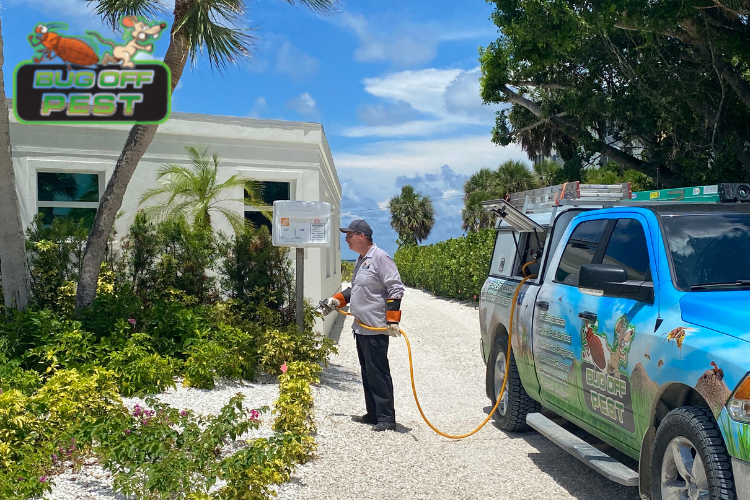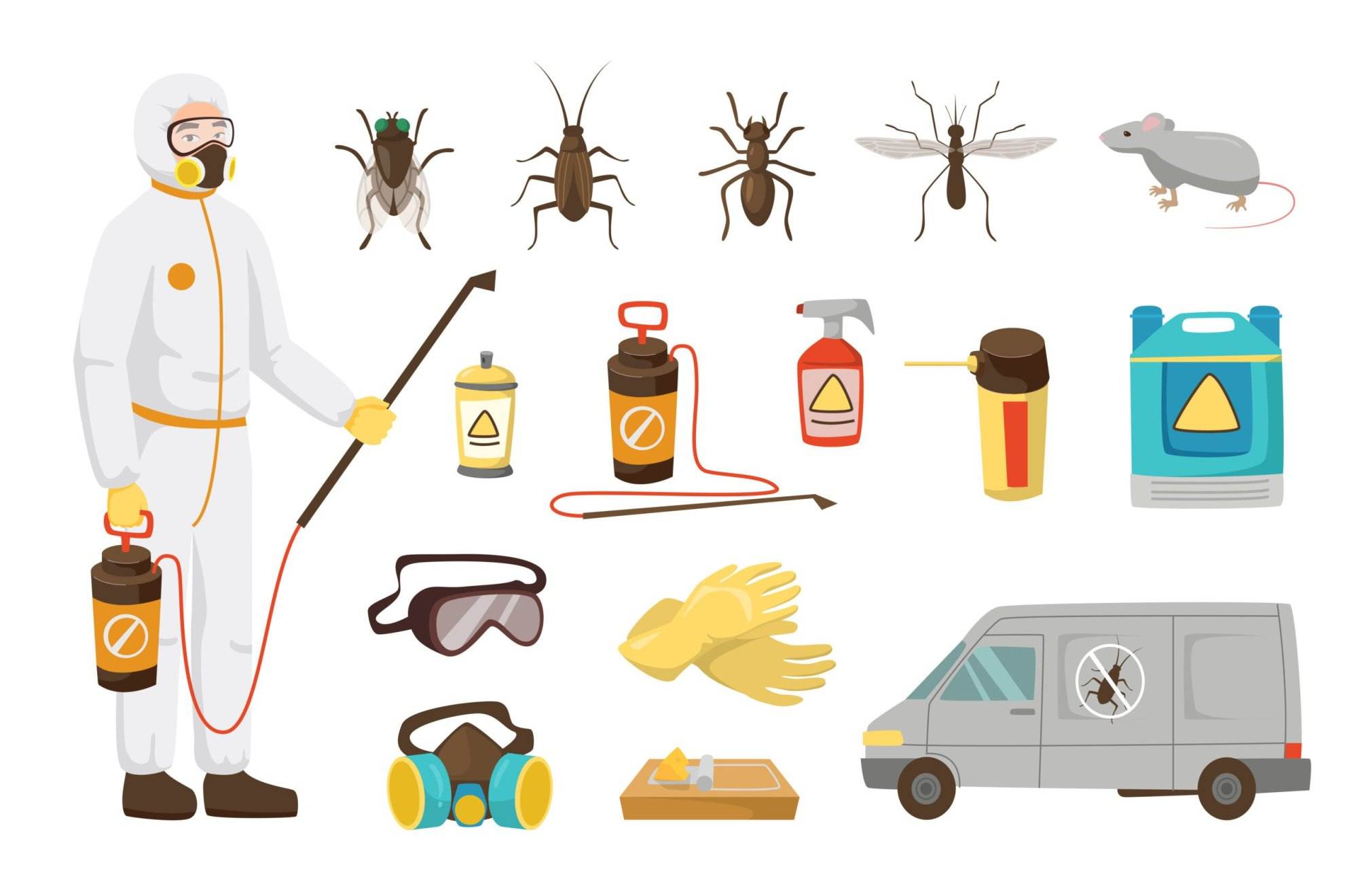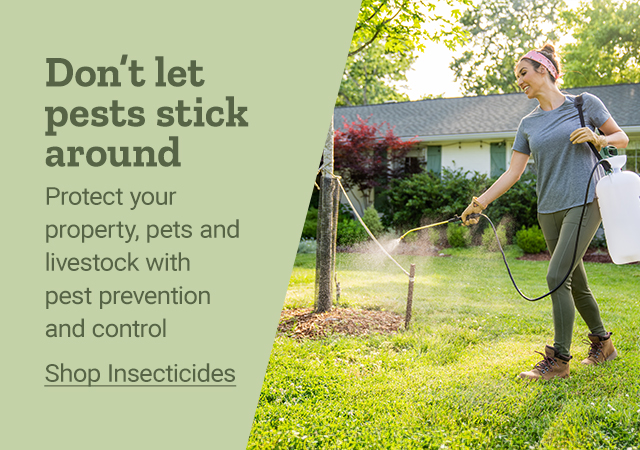Pest Control Services: Keeping Your Household Safe from Dangerous Insects
Wiki Article
Learn More About the current Developments in Pest Control and Exactly How to Apply Effective Therapy Solutions
Over the last few years, the field of parasite control has experienced substantial developments, driven by the demand for sustainable and efficient treatment options. Cutting-edge methods such as Integrated Bug Monitoring (IPM) combine environment-friendly practices with cutting-edge technology, enhancing both effectiveness and ecological duty. The combination of wise innovations and DIY techniques has actually encouraged people to take on parasite issues more efficiently. As we check out these advancements, it ends up being vital to recognize just how finest to apply these strategies in numerous settings to accomplish ideal results. The ramifications for insect administration techniques can be transformative.Eco-Friendly Pest Control Options
Recently, the need for environmentally friendly pest control alternatives has surged as companies and homeowners alike look for sustainable options to conventional chemical therapies. This shift is driven by expanding environmental awareness and a wish to reduce the health threats connected with artificial pesticides.

Green pest control techniques incorporate a range of techniques that focus on using natural compounds and practices. Integrated Insect Management (IPM) is one such approach, combining biological, cultural, and mechanical techniques to take care of pest populations while reducing dependence on chemicals (Wildlife removal services). This all natural method highlights prevention through habitat manipulation and the intro of all-natural predators, consequently cultivating a well balanced ecological community
One more prominent choice is the use of organic pesticides originated from plants, which tend to be less dangerous to non-target microorganisms. Products like neem oil and diatomaceous planet have gotten grip for their efficiency in managing parasites while positioning very little dangers to human health and the setting.
In addition, exclusion methods, such as securing access factors and keeping tidiness, play a vital role in environment-friendly parasite administration. By embracing these sustainable techniques, individuals and services can efficiently manage pests while advertising a much healthier world for future generations.
Smart Innovation in Insect Management
Innovation is improving the landscape of bug administration, with smart technology becoming a critical force in enhancing efficiency and performance - Wildlife removal services. The assimilation of Web of Things (IoT) tools, expert system (AI), and information analytics is reinventing how parasite control experts approach problems
Smart traps equipped with sensing units can discover pest task in real-time, sending prompt alerts to drivers. This enables for timely feedbacks, lessening damage and reducing the demand for substantial therapies. Furthermore, AI algorithms examine historic information to anticipate pest habits, enabling aggressive interventions based upon ecological conditions and infestation patterns.
Drones and computerized vehicles are also playing a substantial duty in bug administration, supplying airborne assessments of big areas, determining hotspots, and even dispersing targeted treatments. These modern technologies not only streamline procedures but also boost security by restricting human exposure to possibly dangerous chemicals.
Furthermore, mobile applications empower customers to keep an eye on parasite task and gain access to expert suggestions, promoting a collective approach to pest monitoring. Generally, the adoption of wise modern technology is establishing a brand-new requirement in bug control, emphasizing data-driven choices and sustainable techniques that inevitably profit both house owners and specialists alike.
Integrated Pest Monitoring Methods
Integrated Insect Administration (IPM) utilizes an all natural method to pest control, combining different methods to properly manage pest populaces while minimizing threats to human wellness and the environment. IPM rotates around comprehending the pest life cycle, their natural adversaries, and the community in which they flourish.One of the basic parts of IPM is monitoring pest populations via regular examinations and data collection. This enables the identification of parasite thresholds, identifying when treatment is necessary. Cultural methods, such as plant turning, hygiene, and environment adjustment, are important in reducing insect occurrence and advertising plant wellness.
Mechanical controls, including traps and barriers, are likewise crucial in IPM. These techniques can physically eliminate or prevent bugs without using chemicals. When required, the wise application of chemical controls is utilized, concentrating on targeted therapies that minimize ecological influence.
Education and partnership amongst stakeholders, including farmers, bug control experts, and the neighborhood, are critical for the successful application of IPM techniques. By focusing on lasting practices, IPM not only addresses pest issues yet likewise fosters a healthier community.
Biological Control Methods
Many biological control approaches are progressively identified for their performance in handling parasite populations while promoting ecological balance. These approaches harness natural killers, bloodsuckers, and microorganisms to lower pest numbers without counting on artificial chemicals. For circumstances, the introduction of ladybugs can efficiently control aphid populaces, while nematodes target soil-dwelling bug larvae.Furthermore, the use of microbial chemicals, such as Bacillus thuringiensis (Bt), offers an eco-friendly alternative for taking care of caterpillar pests. These items specifically target pest species, decreasing harm to beneficial bugs and pollinators. In addition, conservation organic control stresses enhancing habitats for natural adversaries, such as birds and valuable pests, thereby urging their existence in farming systems.
Research study proceeds to expose cutting-edge techniques within this area, such as the use of scents to disrupt pest breeding patterns or the development of biocontrol agents with hereditary engineering. Applying these methods can result in lasting pest management practices that minimize the dependence on chemical interventions, eventually fostering healthier environments. As understanding of these methods expands, they are ending up being essential parts of integrated insect monitoring (IPM) methods, supplying a balance between reliable bug control and environmental stewardship.
Do It Yourself Insect Control Solutions
As home owners look for efficient ways to deal with pest issues, do it yourself pest control options have actually acquired appeal for their ease of access and cost-effectiveness. These methods encourage individuals to resolve problems using Cockroach exterminator Port Charlotte readily offered materials and techniques, usually without the requirement for professional treatment.
Furthermore, maintaining proper sanitation and routine inspections can stop parasite access and nesting (Wildlife removal services). Easy practices, such as securing splits, removing food sources, and decluttering, can considerably diminish insect populaces. Traps, both homemade and readily readily available, can likewise use reliable remedies for monitoring and regulating specific pests like bugs or rats

Final Thought
The assimilation of green pest control options, clever modern technology, and cutting-edge monitoring strategies presents an extensive method to efficient pest administration. By accepting Integrated Parasite Administration (IPM) and making use of biological control approaches, alongside DIY options, responsible and sustainable pest control can be attained. These innovations not just improve the effectiveness of insect management practices yet likewise add to a much healthier environment. Applying these strategies cultivates a well balanced environment while efficiently addressing pest populations.Green bug control techniques include a variety of methods that prioritize the use of natural compounds and practices. Integrated Insect Administration (IPM) is one such method, incorporating organic, social, and mechanical techniques to take care of bug populaces while minimizing reliance on chemicals. As understanding of these techniques grows, they are coming to be indispensable elements of incorporated pest management (IPM) strategies, supplying an equilibrium in between effective pest control and ecological stewardship.
The combination of environment-friendly insect control options, clever modern technology, and ingenious management approaches offers a detailed approach to reliable bug management. By welcoming Integrated Bug Management (IPM) and making use of organic control methods, along with DIY solutions, lasting and responsible pest control can be attained.
Report this wiki page